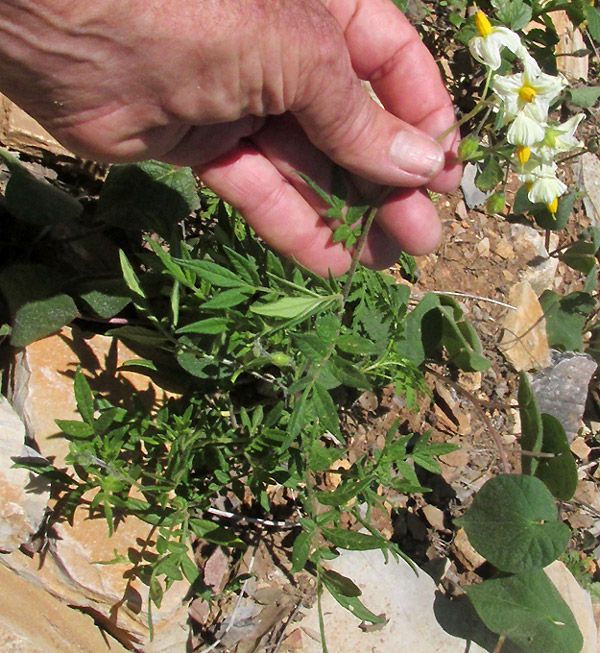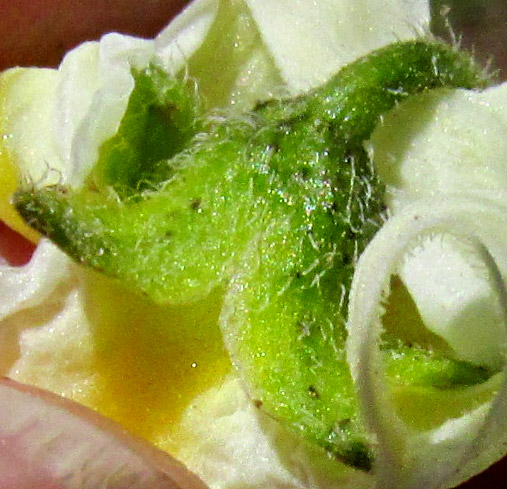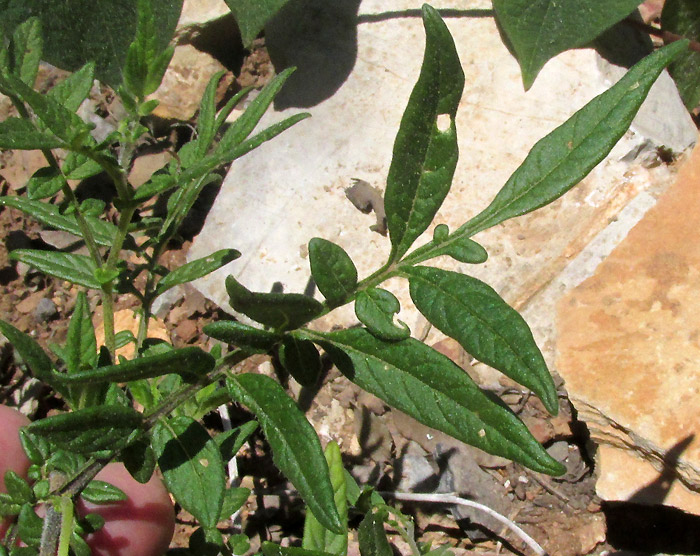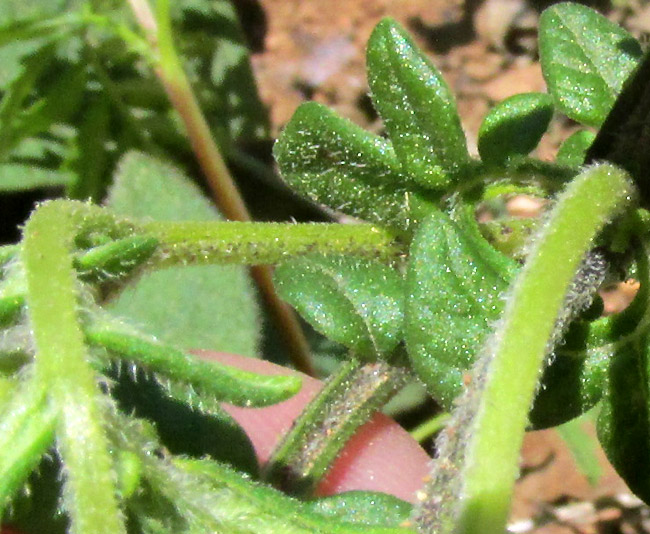Excerpts from Jim Conrad's
Naturalist Newsletter
Entry from field notes dated September 3, 2023, taken in Los Mármoles National Park in the Eastern Sierra Madre mountains, Hidalgo state, MÉXICO; oak-pine forested mountain, on road leading to Puerto de Piedra, which branches off the road between Trancas {on maps designated "Morelos (Trancas)"} and Nicolás Flores; limestone bedrock; elevation ~2,550m (~8,350); N20.811°, W99.219°
"WILD POTATO"

On a steep, rocky slope, the above herb seemed to be doing well despite the area's ongoing, severe, two-year drought. The white, five-pointed, star-shaped flowers with yellow "noses" consisting of five anthers fused together along their margins forming a tube, and the slender, white style emerging from the anther tube, announced either of two common genera in the big Nightshade/Potato/Tomato Family, the Solanaceae: Lycianthes or Solanum. The view seen below settled which genus it was:

Lycianthes calyxes develop ten lobes, so this is a five-lobed member of the +1,500-species-strong genus Solanum. Identifying Solanum species can be hard because so many species are recognized, many are very similar to one another, and their taxonomy isn't well understood. The 2021 study by José Luis Villaseñor and others entitled "Riqueza y distribución de la flora vascular del estado de Hidalgo, México" lists 57 Solanum species documented as occurring in our upland central Mexican state of Hidalgo. Of those species, 13 are endemic just to Mexico. In Solanum identification, you just have to do the botany.


For identifying the species, critical features shown above include that the corolla lobes may be just a little longer than the corolla tube below them. The anthers are 6.5mm long and the style rises well above them. The picture at the right doesn't help much with the ID, but it's interesting. In Solanum, pollen exits the anthers through a pore atop each anther. Usually the pores are clearly visible but here the pores must hide beneath the in-curving anther tips.

Our plant's pinnately compound leaves provide a major field mark, since a little over half of our local Solanum species produce simple, undivided leaves. Moreover, a fair number bear stiff spines on their leaves and stems, which our species doesn't. At this point, already the above features are enough to narrow down the possible species from the 57 documented for Hidalgo state, to two species. The determining feature for separating the two eligible species is shown below:

One candidate species is densely hairy with abundant glands on short hairs mingling with longer, glandless hairs, while the other usually is almost hairless, though it can be hairy without glands. The above picture isn't clear enough to see if the glands are on short stalks, but the leaves' surfaces glisten in a way typical of small glands in sunlight; our plant is very glandular. That means we have SOLANUM POLYADENIUM, without an English name just for itself, though all species in this group -- the "potato clade" of Solanum -- with pinnately compound leaves and tubers on their roots can all be called wild potatoes.
Solanum polyadenium is endemic just to the uplands of central Mexico, from about Durango in the north to Oaxaca in the south. It grows in highland environments on limestone and volcanic soils.
The tubers of Solanum polyadenium are real potatoes, though photographs of them I've seen range from pea-size to that of a small egg. They're white and grow separated from one another on white roots. However, Donovan Correll in his 1962 book The Potato and Its Wild Relatives says that the tubers are narrow and sometimes coiling, and can grow more than a foot long, the largest of any wild species.
I find no mention of traditional human use of this particular species, though it's safe to assume that in the past people ate them, like wildlife. There's plenty of literature, however, based on the notion that genes from this species can be inserted into chromosomes of regular garden potatoes to afford resistance to diseases and insects.
For example, R.W. Gibson in the 2008 study "Glandular hairs providing resistance to aphids in certain wild potato species," found that glands on Solanum polyadenium, when pierced by aphids, produce a substance that becomes sticky when exposed to air. The stickiness accumulates on aphid legs until they can't move around, and starve to death. Pieter Wolters and others in their 2021 study "Qualitative and Quantitative Resistance against Early Blight Introgressed in Potato," found Solanum polyadenium to be fairly resistant to Early Potato Blight. More recently, the 2023 paper by Nisha Bhatia and others entitled "Screening of wild species and transcriptome profiling to identify differently regulated genes in response to late blight resistance in potato" describes Solanum polyadenium as being resistant to late blight.